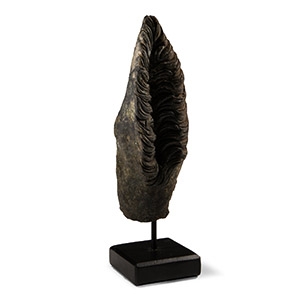Home > Auctions > 5 - 9 September 2023
Ancient Art, Antiquities, Natural History & Coins
Auction Highlights:
Acquired European art market, 1980s-1990s.
Private English collection.
Lt. Col. H.A. Hill, R.A.M.C. while stationed in Cyprus as S.M.O in the 1920s, thence by descent.
Cf. The Metropolitan Museum of Art, accession number 74.51.1771, for very similar.
Lt. Col. H.A. Hill, R.A.M.C. while stationed in Cyprus as S.M.O in the 1920s, thence by descent.
Cf. The Metropolitan Museum of Art, accession number 74.51.1771, for very similar.
Ex private Orange Country collection.
with Ancient Resources Auctions, Auction 34, 14 September 2014, lot 246.
Accompanied by a detailed collector's catalogue pages including description and photograph.
See Morandi, L., Early Iron Age Finds from the Villanovan cemetery of Colle Baroncio: remarks on early Vetulonia and its connections, in Mediterranean Archaeology, 2013.
Such urns were often deposited with the cremated remains inside, one handle broken off (perhaps part of the funerary rites) and in some case a bronze crested helmet placed over the top of the urn.
With Gorny & Mosch, Auction 194, 14 December 2010, lot 505.
This lot has been checked against the Interpol Database of stolen works of art and is accompanied by search certificate number no.11799-206830.
See Bussière, J., Lindros Wohl, B., Ancient Lamps in the J. Paul Getty Museum, Malibu, 2017, no.599, p.438.
This lamp belongs to a type of plastic lamp made in Anatolia and widespread throughout the Eastern Empire. The sandaled foot was part of the classification of plastic lamps dedicated to the representation of the human body. These lamps were the luxuries of the poor, being brought to temples as votive offerings, however some took their place in the domestic lararia, or were kept by children as playthings.
Acquired in the late 1980s-early 1990s.
Important North West London collection.
Cf. Henig, M., A corpus of Roman Engraved Gemstones from British Sites, Oxford, 2007, for similar gemstones with caduceus (no.422) and calathus (App.54) flanked by cornucopiae.
According to Greek mythology, the cornucopia was the horn lost by the Achelous river in the fight with Hercules for Deianeira and filled by the Naiads with flowers and fruit as a symbol of abundance, thus alluding to the fertility of the valley where the Achelous flowed. The owl, symbol of Athena, flanked by cornucopiae, evoked the abundance asked from the goddess by the wearer of the gemstone.
From a European collection formed in the 19th century or earlier, based on the custom-made tooled leather box similar to another fragment kept in a case of similar manufacture with a label reading 'Fragment de Pompéi provenant de la vente Préat 1868' sold at Sotheby's New York, 12 December 2013, lot 84.
Mitsukoshi department store, Nihonbashi, Tokyo, by 1974.
Japanese art market, 1974-1978.
Accompanied by an academic report by Dr Raffaele D'Amato.
This lot has been checked against the Interpol Database of stolen works of art and is accompanied by search certificate number no 11828-207723.
Cf. Gullini, G., La pittura romana, Torino, 1969, pp.72ff.; Gullini, G., Problemi di pittura romana, Torino, 1972, pp.60ff.; De Franciscis, A., The Pompeian Wall paintings in the Roman Villa of Oplontis, Recklinghausen, 1975, pls.17,23; Barham, N., ‘Theorizing Image and Abstraction in Ancient Rome: the Case of the Villa Farnesina’, in Association for Art History, 2021, pp.165-185, fig.3; for the iconography of the sirens in Roman paintings see a wall painting in the British Museum accession no.1867,0508.1354 in Hinks, R.P., Catalogue of the Greek, Etruscan & Roman Paintings & Mosaics in the British Museum: Paintings, London, 1933, fig.27.
This painted stucco was probably part of a decorative frame. Such decorations can be seen on the famous Villa of Oplontis, where the painted walls of the Triclinium nr. 14 have been divided thrice by columns with a sphinx as ornament on the top of the pillar, decorated with acanthus scrolls and sirens beneath the sphinxes.
Acquired on the German art market around 2000s.
From the collection of an EU gentleman living in the UK.
Acquired in Europe before 1992.
Cf. Speidel, M.P., 'Eagle-bearer and trumpeter' in Bonner Jahrbucher, 176, 1976, pp.123-163; Greet, B.J.R., The Roman Eagle: A Symbol and Its Evolution, Leeds, 2015, figs.6.7, 6.8.
The cult of Jupiter Dolichenus was a variant of worship of Zeus from Asia Minor whose mystery cult was widespread in the Roman Empire from the early 2nd to mid-3rd centuries A.D., especially in the military. The god is usually represented mounting a bull, with the double axe (labrys or bipennis) in his right raised hand, and dressed in the military attire of a Roman general.
Ex old English collection.
London art market, 1980s.
This lot has been checked against the Interpol Database of stolen works of art and is accompanied by search certificate number no.11890-207744.
Cf. similar in the collection of the British Museum under accession no.OA.873.
Ex old English collection.
London art market, 1980s.
This lot has been checked against the Interpol Database of stolen works of art and is accompanied by search certificate number no.11858-207740.
In the 1st century the Ala Bosporanorum was camped near the Euphrates. It was stationed in Dacia in the 2nd century; stayed for a while in Vecel, from where it went to Maroskeresztúr, where stamped bricks of their building work appear. The unit was also stationed in upper Pannonia in 116 A.D.
Acquired in Europe before 1995.
Private collection, Europe.
Cf. various statuettes of satyrs with similar ears in the Metropolitan Museum of Art, inventory nos.1972.118.68 (Etruscan, 5th century B.C.), 07.286.90 (1st century A.D.); see a bronze statue of Silenus with a wineskin found in 1754 around the impluvium of the Villa dei Papiri, Herculaneum, now in Naples Archaeological Museum, inventory number 5006.
In the mythology of ancient Greece and in the Graeco-Roman literary world, satyrs were a community of beings who lived mostly in woods, surrounded by nature, and often together with nymphs. In the most ancient period they were imagined by the Greeks like Sileni, in human form, but with the ears, tail and sometimes hooves of horses. Seilenoi were depicted as fat, elderly, white-haired men, with snub noses, balding heads, and the ears and tails of asses. They were sometimes covered in fluffy white hair and occasionally sported a pair of ox horns.
61 - 72 of 2453 LOTS

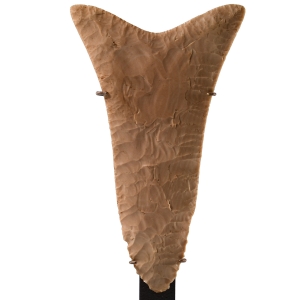
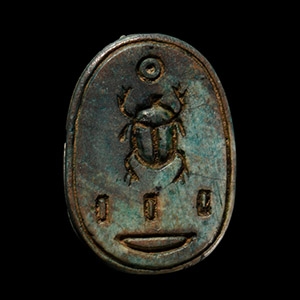
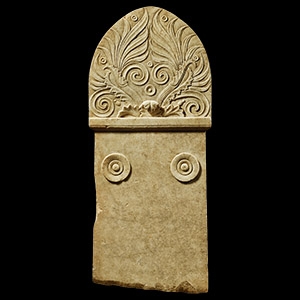
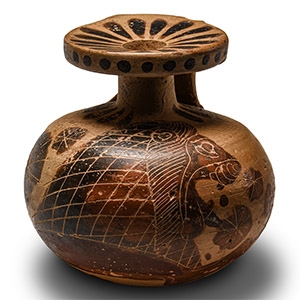
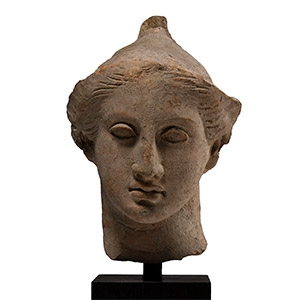
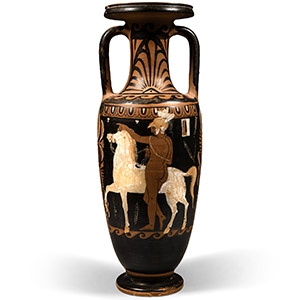
.jpg)
.jpg)
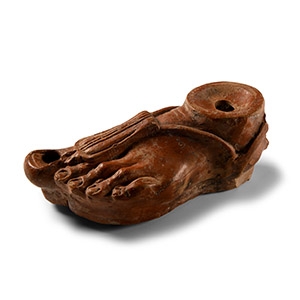
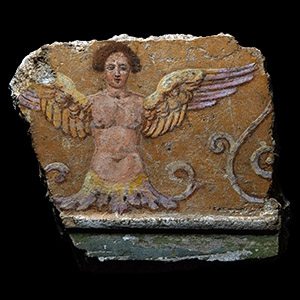
.jpg)
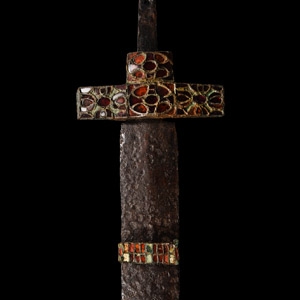
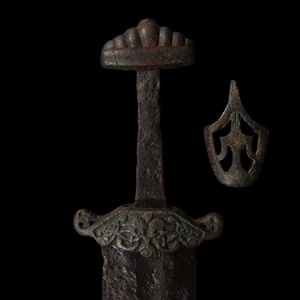
.jpg)
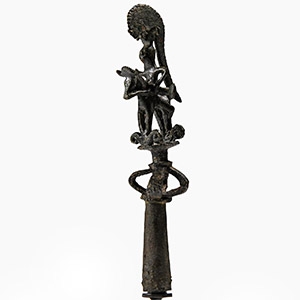


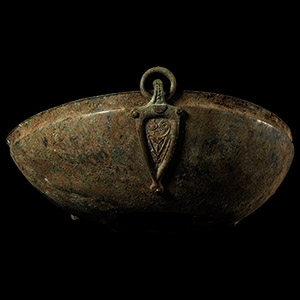
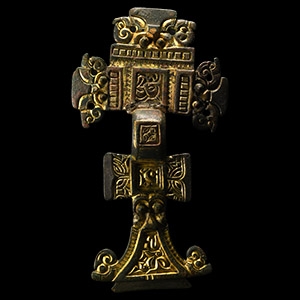
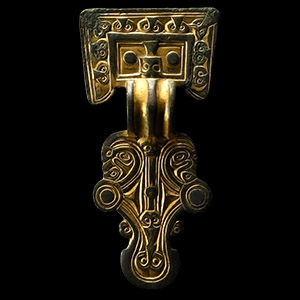
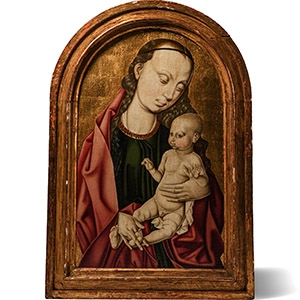

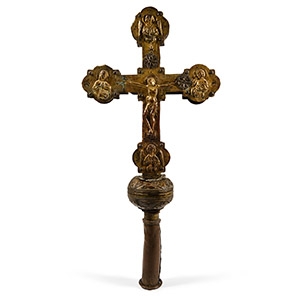
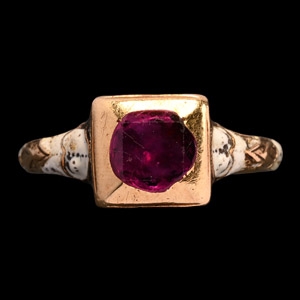


.jpg)
.jpg)

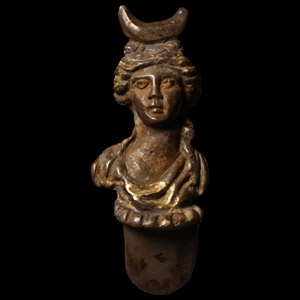
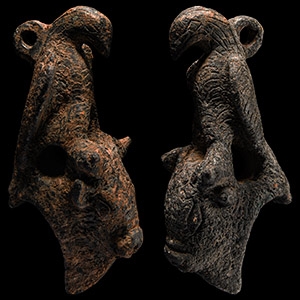
.jpg)
.jpg)
